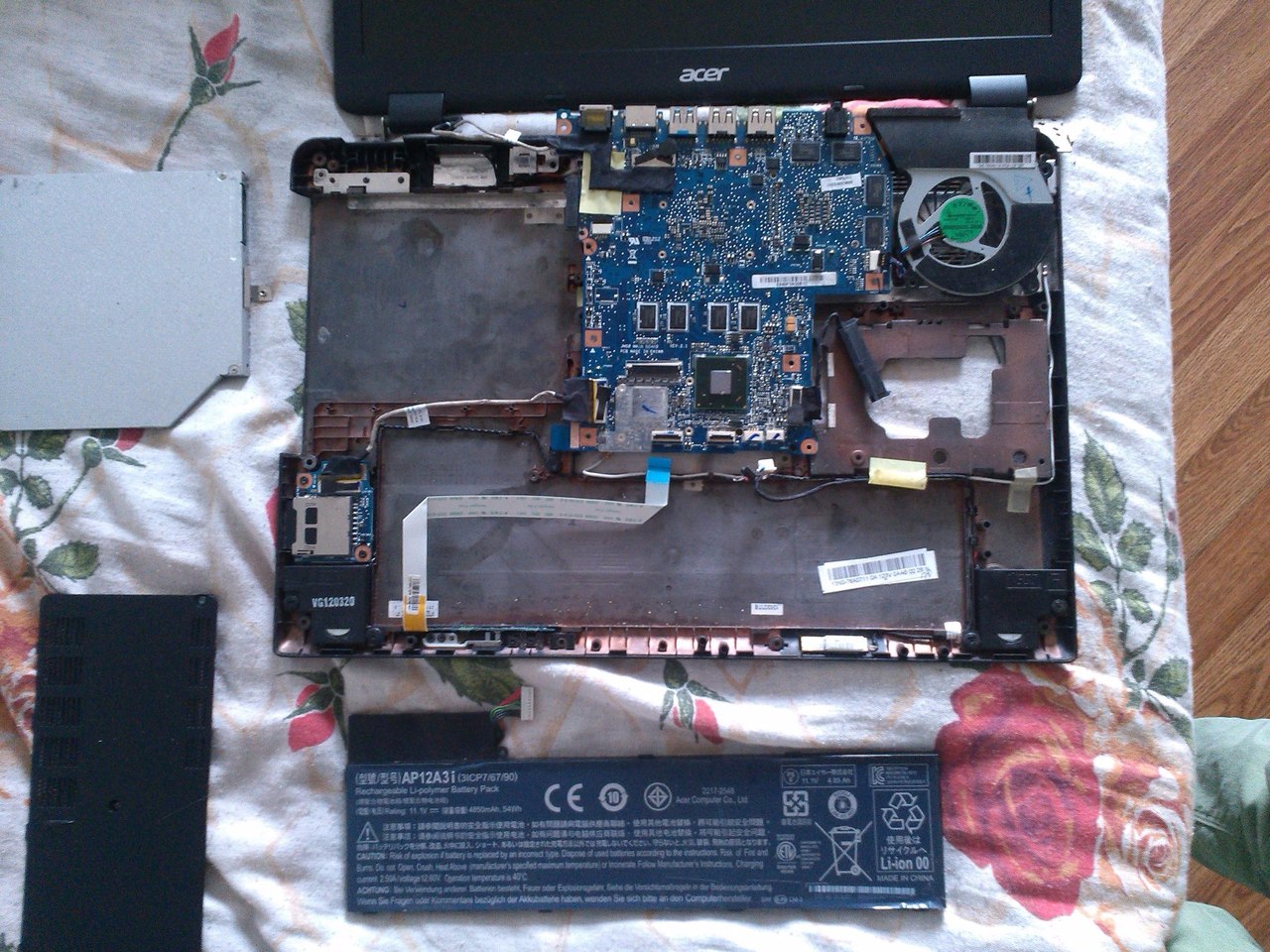Answer the question
In order to leave comments, you need to log in
How to diagnose a laptop breakdown using my example?
Notebook Acer Aspire Timeline Ultra M5-581TG Motherboard  on one side
on one side
Motherboard on the other side
I can add the necessary photos closer if something is needed.
Half a year ago, I spilled something like tea on him. It hissed wildly like never before and turned off, no longer showing signs of life at all. Then he disconnected the battery, disassembled it and, on someone's advice, washed it with water. Then dried for two days. And since then I don't know what to do with it. For two or three years of use, I changed the keyboard and matrix in this laptop.
Judging by the fact that it can work with a disconnected battery, it's not about her. Light bulbs don't light up. The cooler is not working. How to understand what the problem is and is it possible to bring the laptop back to life? I am ready to dig into it and try to find the right replacement components.
Answer the question
In order to leave comments, you need to log in
Diagnostics comes from power.
1. We check the power supply (with a voltmeter) - it works, well, let's move on.
2. We connect the PSU to the laptop (we do not try to turn it on) - is the network indicator on or off? If it burns, good, go to step 4.
3. If the network indicator is off, we are looking for the reason in the chain between the connector and the indicator.
4. We try to turn on the laptop and look for the presence of voltages on the board, it must be 5 V. and 3.3 V. If not, we change / repair voltage converters.
As a more correct option, we visually determine the voltage converters installed on the board (we are looking for a DataSheet for microcircuits on the Internet). The output is usually a bunch of electrolytic capacitors. Carefully solder and lift the output pin from the converter chip. We measure the resistance (on the board after the soldered output). At first, it (resistance) will show zero (or very close), then, as the electrolytes are charged, it will begin to increase. If the resistance does not increase or remains close to zero - a short circuit on the board, the search may not be successful.
Specifically, in your case, you need to at least replace the motherboard.
Didn't find what you were looking for?
Ask your questionAsk a Question
731 491 924 answers to any question